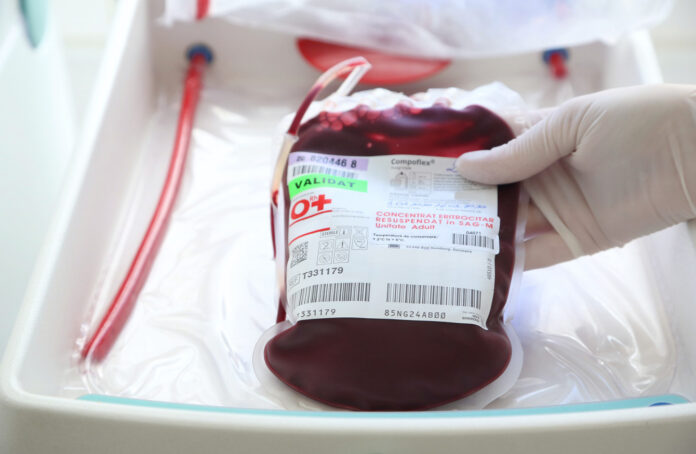Health
Four-Day Work Week Boosts Employee Health Across Six Nations

A recent pilot program has demonstrated that a four-day work week can significantly improve employee health and reduce burnout. Conducted across six countries, including Australia, Canada, Ireland, New Zealand, the United Kingdom, and the United States, the study involved approximately 2,900 workers from 141 organizations. Participants who shifted to a shorter work week reported enhanced mental and physical well-being after just six months.
Countries like Poland, Iceland, Germany, and Portugal are exploring similar initiatives in response to increasing rates of depression, anxiety, and burnout. In Belgium, employees now have the right to request a four-day work week. The findings of this study, published in the journal Nature Human Behaviour, contribute to a growing body of research advocating for reduced working hours as a means to improve workplace health.
Positive Outcomes from the Pilot Program
Before the trial began, companies underwent two months of training to enhance efficiency and collaboration. Following this, they implemented a four-day work week, effectively reducing working hours by 20 percent. The results were striking: employees reported less burnout, improved health, and greater job satisfaction compared to a control group of 12 US companies that maintained regular hours.
According to Wen Fan, an associate professor of sociology at Boston College and one of the study’s authors, “the wellbeing effects are fairly uniform across companies, across nations, across employees.” The findings revealed that as employees reduced their working hours, their job satisfaction and mental health improved. Notably, even those who only slightly reduced their hours experienced benefits over their peers in the control group.
Most organizations continued to operate on the four-day schedule one year after initiating the program, indicating that the positive effects did not diminish as employees adjusted to their new routines. Brendan Burchell, a sociologist at the University of Cambridge, noted that there was no evidence of a decline in employee wellbeing or performance over time.
Factors Contributing to Improved Wellbeing
The research identified three primary factors contributing to the positive outcomes: employees’ perceived work ability, improved sleep quality, and reduced fatigue. Burchell emphasized the strong connection between quality sleep and various health measures, stating, “the link between getting good sleep and all sorts of health and wellbeing measures is really quite strong.”
Prior to the trial, participants averaged 40 hours of work per week, bringing their new schedule down to 32 hours, which aligns with the average work week in the Netherlands and falls below the European Union’s average of 36 hours. This shift could serve as a model for other nations looking to alleviate workplace stress. For instance, Spain is considering reducing its work week from 40 hours to 37.5 hours.
While the pilot program’s findings are compelling, researchers acknowledged some limitations. Self-reported data on wellbeing may have been biased, as participants may have overstated their health to support the trial’s continuation. Additionally, the companies involved in the study had to opt in, suggesting a pre-existing commitment to employee flexibility and wellbeing that may not reflect broader organizational cultures.
Fan highlighted the challenge of integrating shorter work weeks into dominant organizational cultures that prioritize longer hours and in-office work. The pilot predominantly involved high-income, English-speaking countries, raising questions about how such a model might adapt to different cultural contexts.
Despite these limitations, Burchell described the study as a “blockbuster” that provides robust evidence regarding the impact of four-day work weeks across diverse organizations and countries. He noted that the pandemic has encouraged a reevaluation of work structures, stating, “this is an absolutely key paper that’s… going to be a game-changer.”
As countries and organizations contemplate the future of work, the positive outcomes from this pilot program offer valuable insights into how reduced work hours can foster healthier, more satisfied employees.
Health
Four-Day Work Week Boosts Employee Wellbeing, Pilot Study Shows

A recent pilot study spanning six countries has revealed significant improvements in employee wellbeing following the implementation of a four-day work week. Conducted over six months, the trial involved approximately 2,900 workers from 141 organisations, all of which reduced their working hours by 20 per cent without cutting pay. The findings suggest that this innovative approach could mitigate rising rates of burnout, anxiety, and depression among employees.
Countries such as Australia, Canada, Ireland, New Zealand, the United Kingdom, and the United States participated in the study, which was published in the journal Nature Human Behaviour. This research adds to a growing body of evidence indicating that shorter work weeks can enhance both employee health and overall productivity.
Prior to the trial, participating companies underwent a two-month period of training aimed at improving efficiency and collaboration among workers. Following this, the four-day work week was adopted for six months. According to the study, employees reported notable reductions in burnout and enhancement in both mental and physical health, alongside higher job satisfaction levels.
After examining the outcomes, researchers found that employees who participated in the reduced work week experienced consistent benefits. “It just seems that the wellbeing effects are fairly uniform across companies, across nations, across employees,” stated Wen Fan, an associate professor of sociology at Boston College. The more hours employees reduced, the better they felt about their jobs and mental health.
In contrast, a control group from twelve US companies that did not reduce their work weeks showed no significant changes in employee wellbeing. The study demonstrated that employees who worked fewer hours reported fewer sleep issues and reduced fatigue, underscoring the critical link between adequate sleep and overall health.
Interestingly, the average work week for participants was around 40 hours before the trial, meaning a shift to 32 hours aligns closely with existing standards in countries like the Netherlands, where the average work week is already established at 36 hours across the European Union. Countries such as Spain are now exploring similar reductions in work hours to relieve pressure on their workforce.
Despite these encouraging findings, the study acknowledges certain limitations. Workers self-reported their wellbeing, raising the possibility that they might have exaggerated improvements to support the trial’s continuation. Additionally, as companies opted into the study voluntarily, it is possible that the results reflect a bias towards organisations already committed to employee flexibility and wellbeing.
“There’s no evidence of any falling back in terms of employee wellbeing or in terms of the performance,” noted Brendan Burchell, a sociologist at the University of Cambridge, who has analyzed similar projects in the UK but did not participate in this research.
As the four-day work week gains traction, the implications for various work cultures remain to be seen. Fan pointed out that the prevailing organisational culture in many industries often prioritises longer hours, which may pose challenges to broader adoption of reduced work weeks.
Despite the need for further exploration, Burchell characterized the study as a pivotal piece of research. “This is an absolutely key paper that’s going to be a game-changer,” he remarked, highlighting the potential for four-day work weeks to reshape employment practices in the wake of the pandemic. The momentum toward shorter work weeks reflects a growing recognition of the importance of employee wellbeing in fostering a more productive workforce.
Health
Ireland’s Cancer Care Disparities Endanger Lives, Urgent Action Needed

New data has exposed significant disparities in cancer care across Ireland, revealing a troubling “postcode lottery” that jeopardizes patient health. With a new cancer diagnosis occurring every three minutes, the urgency for equitable access to timely testing and treatment has never been greater.
Widespread Variations in Care
According to the Irish Cancer Society, only 74.2 percent of men received their prostate rapid access clinic appointment within the targeted 20 working days. This figure starkly contrasts with regional data, where appointments in Galway fell as low as 12.7 percent, while over 80 percent were seen in Cork and Limerick.
Similar inconsistencies were evident in breast and lung cancer care. For instance, 96.6 percent of patients in Waterford commenced radiotherapy within the established timelines, compared to just 62 percent in Dublin’s Beaumont Hospital. These delays highlight a critical issue: where a patient lives can significantly affect their chances of receiving timely and effective cancer treatment.
Impact of Delays on Survival Rates
Averil Power, Chief Executive of the Irish Cancer Society, emphasized that these delays lead to avoidable fatalities. “In cancer care, time can be everything,” she stated. Early-stage diagnosis can yield survival rates exceeding 80 percent, but by stage four, those rates plummet to below 20 percent. Therefore, swift access to diagnostic tests and treatments is essential.
Unfortunately, HSE data reveals that national targets for cancer tests and treatments were frequently unmet between March 2024 and February 2025. Many patients are experiencing distressing waits for tests, with one woman at the Mater Hospital in Dublin waiting 169 days for an urgent breast assessment. Alarmingly, nearly one in four women referred for urgent testing at Breast Rapid Access Clinics did not meet the 10-day target.
Across various hospitals, patients wait longer than necessary for initial appointments at Prostate Rapid Access Clinics. In Galway University Hospital, only 13 percent of patients were seen on time, further compounding concerns about the accessibility of cancer care.
The Need for Systemic Improvement
Delays are particularly pronounced for chemotherapy in the west and north-west regions. At Letterkenny University Hospital, an average of only 20 percent of patients began their treatment on schedule, with some months reporting zero timely starts. While there are signs of improvement, the current situation is unacceptable.
Radiotherapy treatment times have also been problematic, with only 66 percent of patients starting treatment within the 15 working days target across public hospitals. In St Luke’s Hospital in Dublin, this figure dropped to 62 percent, further illustrating the inconsistency in care.
These delays not only cause immense anxiety for patients and their families but also significantly increase mortality risk. Research published in the British Medical Journal indicates that each four-week delay in cancer treatment can elevate mortality rates by up to 10 percent.
Addressing the Shortcomings
Effective cancer services require adequate staffing, equipment, and physical space. Many cancer centers are struggling with shortages in at least one of these critical areas. Despite the dedication of healthcare professionals, there simply aren’t enough staff members to meet the demand. Additionally, essential equipment is lacking; for instance, there is no PET scanner in public hospitals in Galway, Limerick, or Waterford, and several radiotherapy machines in Dublin are outdated and frequently out of service.
The Irish Cancer Society calls for the government to prioritize investments in infrastructure and staffing for public cancer centers as part of the ongoing review of the National Development Plan. With projections indicating that nearly a quarter of a million people will receive a cancer diagnosis during the current government’s term, immediate action is necessary to ensure that all patients can receive timely and effective care.
As Averil Power noted, everyone deserves to hear the hopeful words, “You will survive,” rather than facing the tragic consequences of a postcode lottery in cancer care.
Health
Urgent Call for Blood Donations in Newcastle West Clinics

Blood donation clinics are set to take place in Newcastle West, with an urgent appeal for both regular and new donors to contribute. The initiative is prompted by a significant decline in national blood supplies, which the Irish Blood Transfusion Service has identified as critical at this moment.
According to the Irish Blood Transfusion Service, the summer season typically presents challenges in maintaining adequate blood supplies. The organization noted that many individuals are enjoying their well-deserved summer holidays, leading to reduced clinic attendance. Additionally, the recent warm weather has further impacted donor turnout, exacerbating an already rising demand for blood across the country.
Upcoming Donation Clinics
The blood donation clinics will be held at the Longcourt Hotel on July 21, 2024, and July 22, 2024. Both sessions will operate from 16:50 to 20:10. Individuals interested in donating blood are encouraged to make appointments by calling 1800 222 111.
As the demand for blood rises month on month, every donation becomes increasingly vital for patients in need. The Irish Blood Transfusion Service emphasizes the importance of community support during this critical period to ensure that hospitals can continue to provide essential medical services.
Potential donors are encouraged to consider their eligibility and to take the opportunity to help save lives. Blood donation is a simple yet impactful way to contribute to the health and wellbeing of the community, especially during times of heightened demand.
Health
Explore Emophilia: Recognizing Patterns and Breaking Cycles

Many individuals experience strong feelings of attraction early in a relationship, but for some, this tendency can lead to unhealthy patterns known as emophilia. Defined as the tendency to fall in love quickly and intensely, emophilia can have detrimental effects on mental health and relationships. According to relationship expert and psychotherapist Sarah Louise Ryan, this pattern can result in individuals overlooking important red flags and becoming trapped in toxic relationships.
When someone with emophilia goes on a first date, they may feel an overwhelming sense of connection, often mistaking this rush of emotions for true love. “This phase of romantic love is really the rose-tinted glasses phase,” explains Ryan. The initial thrill is not just about the person, but also about the feelings that arise from new experiences. As relationships deepen, however, the initial excitement tends to fade, which can cause distress for those who crave that initial spark.
Individuals with emophilia may find themselves darting from relationship to relationship, seeking the emotional high of infatuation rather than fostering genuine connections. Ryan notes that while the early stages of love can be exhilarating, they can also lead to a cycle of disappointment. “When that spark fades, that is when the real relationship begins,” she adds, emphasizing the importance of building a deeper connection rather than relying solely on the initial rush.
Understanding Emophilia and Its Implications
The impact of emophilia can be profound. People who exhibit this trait often neglect to examine their partner’s long-term goals or personal values, which can lead them into challenging situations. Ryan cautions that falling for partners who exhibit manipulative behavior can be particularly harmful. Such individuals may engage in “love bombing,” showering their new partner with excessive affection to create an illusion of love. This dynamic may prevent emophiliacs from recognizing warning signs, making it difficult for them to heed advice from friends and family.
Researchers have yet to pinpoint the exact causes of emophilia, but several theories suggest that chemical imbalances in the brain could play a role. Low levels of serotonin, which are linked to mood regulation, may contribute to impulsive romantic behaviors. Additionally, oxytocin, often referred to as the love hormone, can create feelings of trust and attachment, further complicating emotional responses in relationships.
People with Attention Deficit Hyperactivity Disorder (ADHD) may also be more susceptible to falling in love rapidly, as impulsivity is a common symptom of the disorder. Nonetheless, some individuals may simply find excitement in the chaos of love, enjoying the thrill of new connections while feeling bored by stability.
Strategies for Breaking the Emophilia Cycle
While overcoming the urge to chase the excitement of new romantic connections can be challenging, it is possible to change these patterns. Ryan suggests that individuals reflect on whether this approach is truly beneficial for them. If the answer is no, she offers several practical strategies to consider.
1. **Go Cold Turkey**: Taking a break from dating can help individuals focus on self-discovery. By identifying personal strengths and qualities, one can build confidence before re-entering the dating scene.
2. **Spot the Red Flags**: Recognizing universal red flags in relationships, such as a lack of respect or control, is crucial. Individuals should also pay attention to their own deal-breakers, ensuring they ask the right questions to uncover potential issues.
3. **Reflect on Past Patterns**: Self-awareness is key. By examining previous relationships and identifying what went wrong, individuals can develop a clearer understanding of their emotional needs and make more informed choices in the future.
4. **Listen to Trusted Friends**: Friends and family can provide valuable insights that might be overlooked when someone is infatuated. Taking feedback seriously can help individuals see potential problems in new relationships.
5. **Consult a Therapist**: Professional guidance can be beneficial for those struggling with emophilia. Therapists can assist individuals in finding internal validation, enabling healthier connections with themselves and others.
While the pursuit of love can often feel exhilarating, recognizing and addressing the patterns associated with emophilia is vital for establishing lasting connections. By taking proactive steps, individuals can break free from destructive cycles and foster healthier relationships.
-

 World6 days ago
World6 days agoGaza Aid Distribution Tragedy: 20 Killed Amid Ongoing Violence
-

 World6 days ago
World6 days agoHawaii Commemorates 80 Years Since Hiroshima Bombing with Ceremony
-

 World6 days ago
World6 days agoCouple Convicted of Murdering Two-Year-Old Grandson in Wales
-

 Top Stories1 week ago
Top Stories1 week agoClashes Erupt Between Far-Right Groups and Migrants in Spain
-

 Top Stories5 days ago
Top Stories5 days agoFianna Fáil TDs Urgently Consider Maire Geoghegan-Quinn for Presidency
-

 World1 week ago
World1 week agoAristocrat Constance Marten and Partner Convicted of Infant Murder
-

 Top Stories6 days ago
Top Stories6 days agoHistoric Dalkey Pub The Queens Reopens Under New Management
-

 World5 days ago
World5 days agoEnter to Win an APT Travelmarvel Cruise with Photo Contest
-

 Business1 week ago
Business1 week agoSunshine 106.8 Boosts Irish Music After Regulator’s Request
-

 World7 days ago
World7 days agoTrump Defends FBI Deputy Director Amid Epstein Files Controversy
-

 Politics6 days ago
Politics6 days agoTragic Crowd Surge at Gaza Aid Center Claims 20 Lives
-

 World5 days ago
World5 days agoTrump Considers Firing Fed Chair Powell Amid Interest Rate Dispute









